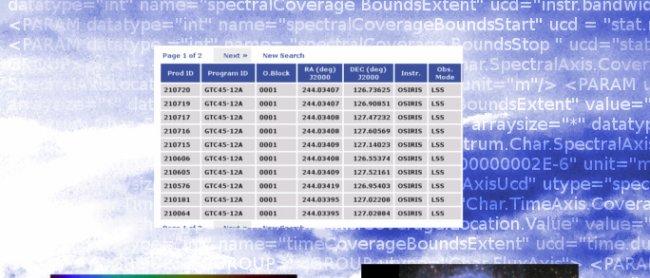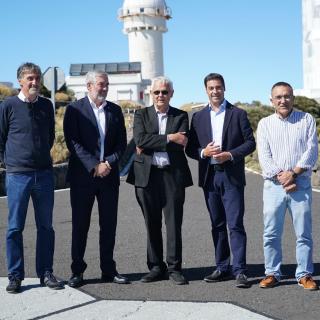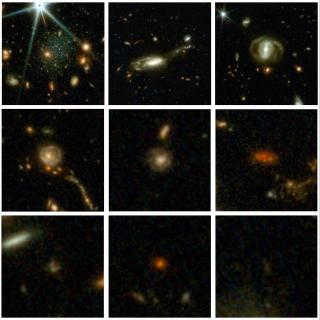There are data archives which house millions of observations of great value for astrophysical research. With the aim of helping the efficient use of all this information, the Tenth Spanish Virtual Observatory School (SVO) will begin next Monday, March 6th. Organized in a collaboration between the Instituto de Astrofísica de Canarias (IAC) and the projects SpaceTec-CM and ASTERICS, this meeting will last for three days at the IAC Headquarters in La Laguna (Tenerife).
More than an astronomical "Google"
Astronomy is fully immersed in the world of big data. The present generation of earth-based and space-based astronomical observatories are producing an avalanche of data impossible to process with the techniques used only a few years ago.
The Virtual Observatory allows us to face this challenge by offering all the data available for a given object in an efficient form, listing how, where and when each observation was made and what is known about it. This international project is much more than an astronomical “Google” because it gives information in standard format and makes all the archives intelligible by using a common language. This normalization allows us to tackle challenges which were unthinkable only a few years ago and opens the door to an inexhaustible fund of material in the field of astronomy.
Comparing large regions of the sky observed at different wavelengths and epochs, discovering objects which vary in brightness, and looking for objects which change their positions in a very few years are among the lines of research which will be worked on during this School. Its main aim is to train the 50 participants in the use and functioning of the main tools and services of the Virtual Observatory, using real scientific cases. Those attending the School will be advised by specialists within the project to apply the knowledge gained to their own fields of research in the best way, and they will have an opportunity to give talks about the advances made during the school, as well as to propose improvements in the tools and services used.
A federation of archives
The year 2000 saw the initiation of the Virtual Observatory, an initiative which began with the aim of setting up a federation of the world’s astronomical data archives, and of which Spain became a member ins 2004. Its work is carried out from the Centro de Astrobiología (CSIC-INTA) the institute which houses the most important Spanish astronomical data centre.
The Virtual Observatory acts as a unified data base, and allows anybody, whether a professional or amateur astronomer, to learn easily and rapidly all there is to know about a specific object. The VO gives information in a standard format, thus solving the main problem which the astronomical community had when it wanted to work with heterogeneous archive data from different sources. Without the VO each astronomical archive would “speak its own language” and it would be very difficult to set up general communication between them. The led to the situation where for many years archives had hidden data of great value which only now are beginning to be rediscovered, by applying the analysis tools which the VO offers.
Organizers:
- Enrique Solano: Centro de Astrobiología (CSIC-INTA)
- Jorge Andrés Pérez Prieto: Instituto de Astrofísica de Canarias (IAC)
- Nicola Caon: Instituto de Astrofísica de Canarias (IAC)
Interesting links:
- Virtual Spanish Observatory (http://svo.cab.inta-csic.es)
- International Virtual Observatory Alliance (http://www.ivoa.net)
- Instituto de Astrofísica de Canarias (http://www.iac.es)
- SpaceTec-CM proyect(https://spacetec.cab.inta-csic.es/main/)
- ASTERICS proyect (https://www.asterics2020.eu/)
More information:
Contact:
- Enrique Solano Márquez, PI of the Virtual Spanish Observatory (VOS): esm [at] cab.inta-csic.es (esm[at]cab[dot]inta-csic[dot]es) and +34 649 12 46 46.
- Jorge Andrés Pérez Prieto (IAC): japp [at] iac.es (japp[at]iac[dot]es) and +34 922 605 440



